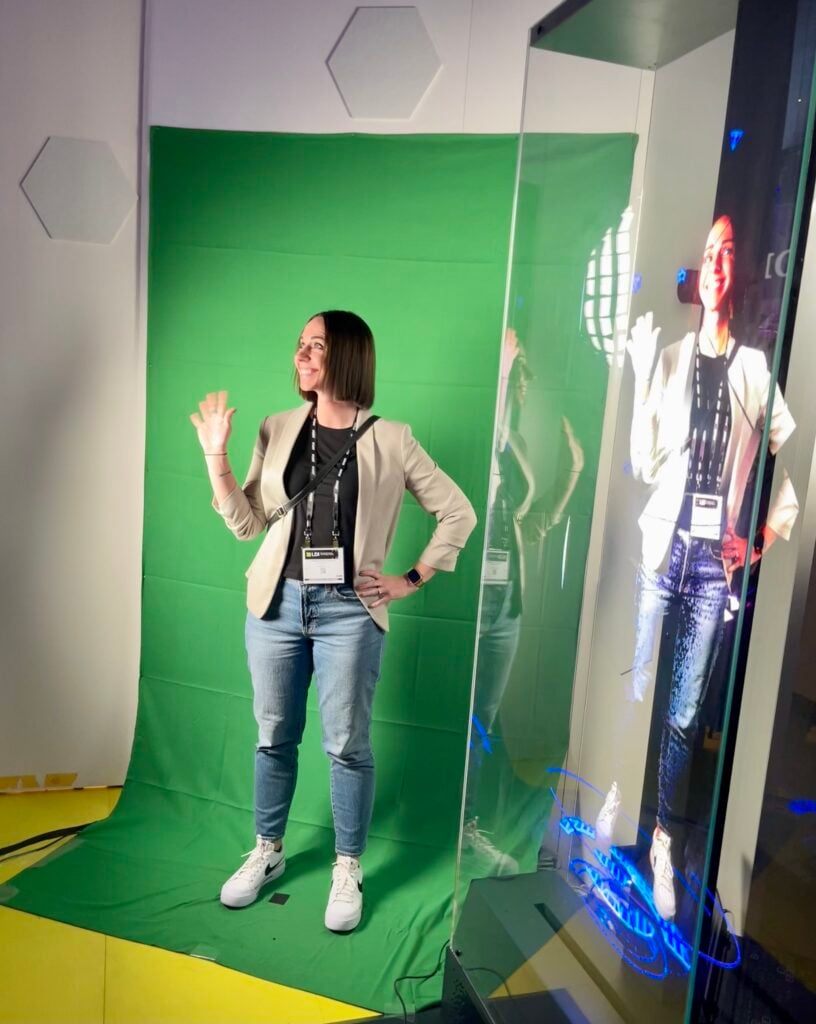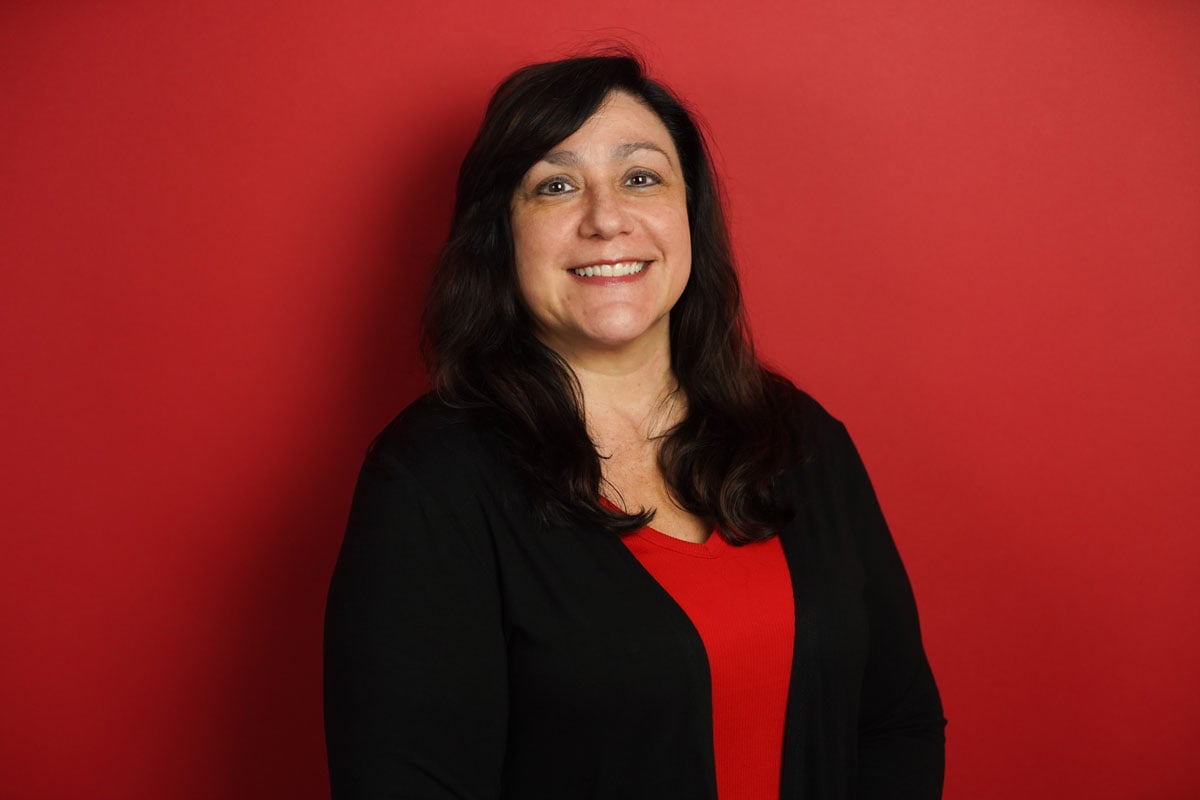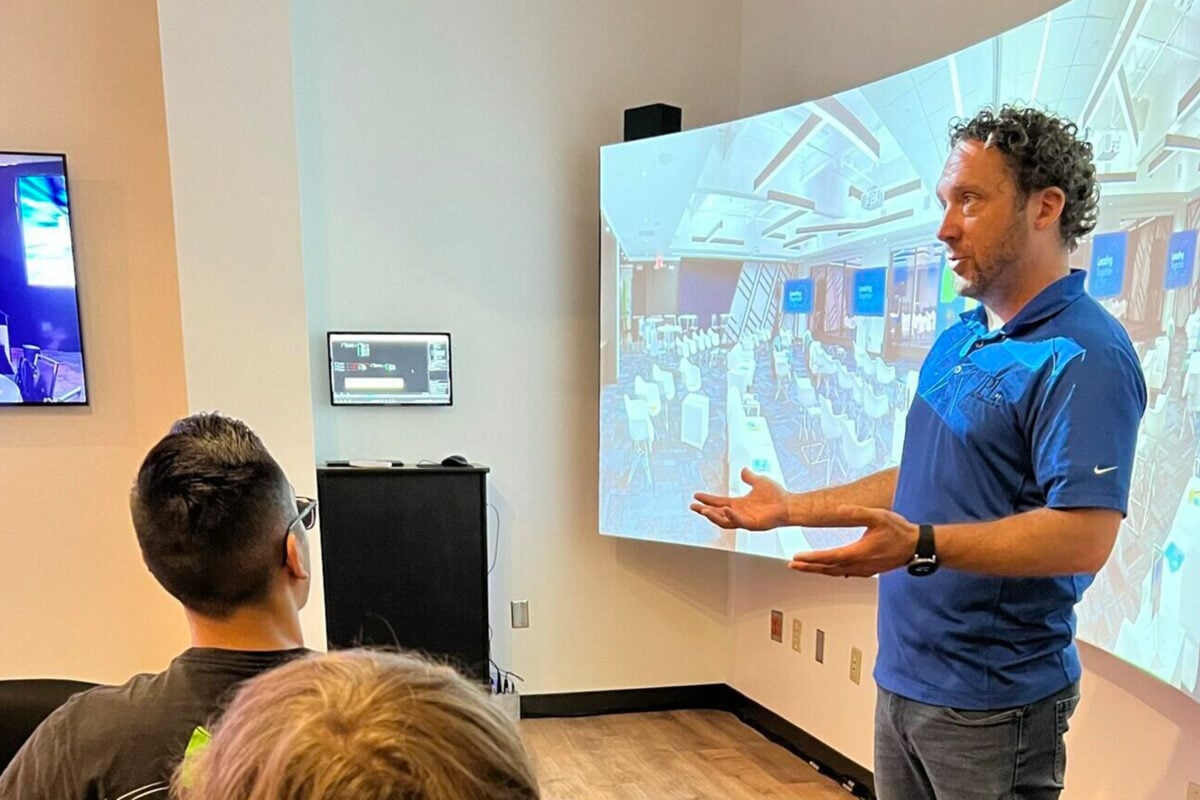Technology has revolutionized how we produce events for clients. JPL began producing live events way back in 1989. We’ve seen firsthand how technology has transformed our event production capabilities.
Today, technology changes the game across every phase of event production work. From planning and creative to analyzing the ROI of an event, our events team stays on top of the latest in event tech to ensure we’re producing experiences that deliver excitement and impact.
Below we’ve taken stock of all the ways we use technology to deliver tangible results from events. Where can we help you get better at bringing people together?
1. Take the stress out of event planning and logistics
Let’s be honest. Planning an event can be a headache when it’s not your main job. It can be time-consuming for your team to plan and execute. Partnering with experienced certified event professionals with deep knowledge of the latest technology can help relieve the stress of event planning. Event management systems—and partners who know how to use them to their full potential—provide a convenient solution for your event needs.
Robust event management software can assist with registration, accommodations, schedules and other tasks. They even have built-in analytics, allowing you to keep track of registrations and engagement in real-time, which helps you make informed decisions.
Event apps have come a long way. In the past, we used to build these from the ground up. With the assistance of Cvent and other event management tools, we can help you personalize and maximize the use of your app. Our team has the know-how to create a remarkable user experience and design a user-friendly interface (UX/UI) for your event.
2. Increase collaboration and speed during creative development
We use technology heavily to help us collaborate with clients on creative. We use different tools to save time and budget during ideation and development. These tools enable us to work seamlessly together and make better decisions as we refine our ideas.
We concept themes and create stunning visual designs, bringing them to life virtually using technology. Using 3D and CAD drawings, we can virtually walk you through a 360-degree view of your meeting space or set design much earlier in the creative process.
Using new technology has led us to open an experiential lab in our office in Harrisburg, Pennsylvania. Our JPL lab can allow you to test and experience the latest creative applications in event technology while we’re in the discovery, planning and creative development stages.
3. Offer reliable and easy-to-use virtual and hybrid options
JPL produced virtual and hybrid events before the start of the COVID-19 pandemic. Back then, we recognized the benefits of developing our own platform that could be customized for virtual and hybrid events. In response, JPL’s HuddleArea was born. Our HuddleArea online platform is a reliable, secure, cost-effective solution for clients to live stream directly to remote attendees. It also delivers event content and helps invite remote viewers into the in-person experience with interactive tools such as live Q&A and more. When the pandemic hit, our HuddleArea solution enabled our event clients to hold events despite travel bans.
Platforms like Zoom and Microsoft Teams became mainstream ways to connect people virtually during the pandemic. These platforms have made great strides in providing features such as breakout rooms, polls and Q&A sessions that imitate the engagement of an in-person event. If you already have Zoom or Microsoft Teams licensing, we provide support and customization services for corporate events.
Our custom solution, HuddleArea, also continues to become more robust as technology changes. We consult with each client to determine which is the best solution for their event. Here are some reasons why HuddleArea might be recommended over off-the-shelf solutions like Zoom and Microsoft Teams:
- Better live stream quality: With years of experience in video broadcasting and streaming, we’ve fine-tuned our platform to match the professional quality you expect.
- Branded experience: If you want to customize your experience from start to finish, the HuddleArea is the way to go. We can customize the look and feel of the platform so your live and remote participants get to experience the same branded design and interactive elements.
- Larger capacity: HuddleArea offers a much larger participant capacity. Other platforms like Zoom and Microsoft Teams have limits on how many can attend.
- Easy recording and uploading: HuddleArea also enables you to broadcast live, record and upload to YouTube easily.
4. Maintain audience engagement from kickoff to closing remarks
During our planning process, we ask three key questions to establish your audience engagement goals:
- What do you want attendees to THINK coming into the event?
- What do you want attendees to FEEL during the event?
- What do you want attendees to DO coming out of the event?
We collaborate with clients to set clear engagement goals that help drive every activity and agenda item. A well-planned event should ensure your audience stays interested and engaged from the beginning to the end.
Thanks to technology, we have many incredible and helpful solutions. There are different ways to keep the audience interested and involved during an event. Some methods we use are:

Virginia Strouphauer (Associate Creative Director, Experience Design) testing out the latest event tech at LDI 2023, a live events industry show.
- Gamification–where attendees earn points for participating in activities.
- Social walls–showing real-time posts from social media about the event, promoting a feeling of community.
- Augmented and Virtual Reality (AR/VR)–These tools offer fun virtual experiences, such as virtual tours and product demos. And they can provide valuable analytics on engagement. Combining the virtual and physical worlds makes tracking data through digital actions simpler. For instance, a virtual passport where people scan items can help you track how many people participated, when they did it and how long they spent on the activity.
- Mobile apps–provide interactive and targeted content that can be personalized on-demand.
Sharing content through technology has changed and plays a huge role in engaging an audience with your key messages and takeaways. Presentations and workshops have become more interactive and immersive. Attendees expect events to have quick surveys, polls, trivia and simple ways to give feedback. We partner with clients to build and improve two-way communications at an event. We use these techniques in fun and exciting ways to entertain and inform.
5. Encourage networking and team building
Networking and team building are core reasons organizations bring teams together in person. However, networking sessions can also be challenging for people who find these sessions outside of their personal comfort zone.
We now have technology that can significantly enhance how we support you in building better team building moments during an event. We use technology to help people connect based on shared interests. This includes scheduling meetings and having virtual meetups. This will make attendees feel less stressed and get more value from planned activities on the agenda.
After the sessions, we can use technology to encourage people to leave their hotel rooms and join fun, after-hour activities. For example, an event app can send push notifications as reminders for casual get-togethers. Gatherings like this allow colleagues to socialize and get to know each other better after the main event ends for the day.
6. Carry DEI goals into your event strategy
Helping our clients to meet their DEI goals is at the core of everything we do, and events are treated no differently. Everyone should feel welcome and able to participate in your events and activities, regardless of age, race, gender, ethnicity, sexual orientation or abilities.
Our team created a DEI Discussion Guide to foster deeper conversations about DEI during event planning with leadership. It helps us gather insights on goals, objectives and details for an event to make recommendations that align with best practices in the event industry. For example, discussion points include date selection, venue selection, planned audience activities, agenda topics and more. Your feedback helps us develop our creative briefs and guide kickoffs with client teams. The guide also helps us set up deliverables and make sure we meet your company’s DEI goals for the event.
A great example of how technology is advancing DEI is the ability to offer closed captioning for those with impaired hearing. In the past, it was costly to provide closed-captioning. Now, we can create AI closed captioning with just an internet connection and a box. Technology has significantly improved how we can make events more welcoming and inclusive.
7. Measure event ROI
Yes, you can measure ROI from a live event. Post-event analytics are a vital way we measure the success of an event and help our clients build on success for future ones. Technology enables us to collect data such as attendee behavior and session popularity. We use this data to understand what worked and what we can improve upon. Since many of our event clients have annual business meetings, they look to us to provide solid metrics that will help measure ROI and fuel new ways we can continuously improve their event year over year.
We relentlessly search for new ways to help us capture analytics for events. For example, our team is looking into an innovative method of measuring engagement for events using facial expressions. This AI tool is already in use with digital signage companies. The program uses AI to track people’s facial expressions through a video (without sound) to identify their interest level. The tool then compares the audience and presenter videos at the same timestamp. It can tell us when the audience is most or least engaged in the content during a presentation.
8. Bring your company’s focus on sustainability to your event
Our clients prioritize sustainability, and we reflect this at their corporate events. Technology enables us to find ways to reduce waste. This comes to life in many ways. We produce digital brochures and apps to reduce the need for printed materials. Online registration and ticketing systems also minimize paper usage.
With virtual and hybrid formats, we can do our part to reduce our carbon footprint significantly. Reducing travel and lodging associated with events is beneficial for the planet. You can still connect and engage with each other but also positively impact the environment. And you’ll save on budget, too!
Clients who come to us annually for their business meetings appreciate when we create set pieces they can reuse. Set pieces are often repurposed in corporate offices and taken to other meetings to carry key messages to other teams.
One area that many might overlook is carbon offset trucking. JPL always uses carbon offset trucking. We’re committed to minimizing our carbon footprint as much as we can to save our planet.
9. Deliver on the promise of security and compliance
As digital engagement increases, so does the need for enhanced security and compliance. JPL takes cybersecurity very seriously. We use the latest technology to help safeguard client data and privacy. To ensure that the computers that run our events remain secure, we use separate computers for events that are never connected to our internal network. After each event, JPL’s IT team performs maintenance to ensure they are up-to-date with the latest security and operating versions. We also run scans to detect any malware or viruses. All of these tasks are carried out on a separate network from our internal network to ensure maximum security.
Technology has truly changed how people interact. It has made it easier for us to connect, learn and engage with each other. This has led to many new opportunities, such as being able to include people from all over the world and create immersive and inclusive experiences. As event technology expands, we can expect even more innovative and efficient ways to bring people together. The key to success will be balancing the use of technology with human connection and interaction in events.
Want to discuss how to elevate the engagement and impact at your next event? Reach out at [email protected].





